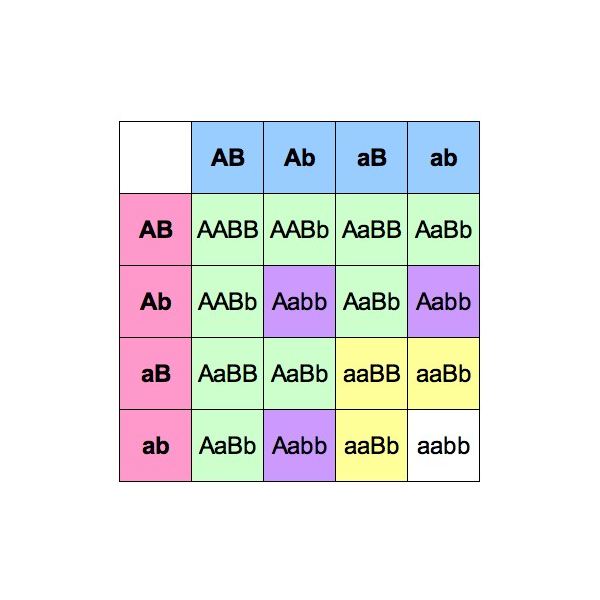We know that, after Mendel bred tall and short plants, he got all tall plants as their offspring. However, these off-spring were heterozygous or hybrid, meaning their gene imprint was Tt instead of pure line, which is TT. This surprising result sent Mendel into a Plant Breeding Frenzy!
Mendel called this Tt generation of plants as F1 Generation. However, now, what he wanted to know was, what would happen if he were to breed two hybrid tall pea plants — a Tt with Tt?
To understand what happens on from here, it is extremely necessary to know the Law of Segregation.
The Law of Segregation
This law simply states that the two alleles in a gene pair separate (or segregate) during gamete formation and each gamete has only one of the alleles.
So, Tt would form two different gametes- T and t. Therefore, the combination of Tt and Tt may yield the following results:
TT, Tt, Tt, and tt.
Thus, three tall plants and one short plant are obtained.
Phenotypic Ratio
So here, speaking phenotypically, TT, Tt and Tt represent TALL plants whereas tt represents a SHORT plant. Therefore, the ratio of the tall plants to the short plants is 3:1. This ratio is also known as phenotypic ratio.
Genotypic ratio
This ratio is based on whether a plant is monohybrid or dihybrid. Now, TT and tt are pure lines i.e. monohybrid whereas Tt and Tt are dihybrid.
But TT and tt represent different characters. Hence, the genotypic ratio of this cross is:
1:2:1
as in 1(tall pure) : 2 (tall hybrids) :1 (short pure).
This is genotypic ratio for the F2 generation. F2 generation is obtained from the F1 generation.
How to Calculate Results of Various Crosses
Therefore, breeding two dihybrid tall plants give 3 tall plants and 1 short plant. Now, how about breeding a Tt with a tt? Or, a monohybrid with a dihybrid?
According to the Law of Segregation, Tt separates into T(1) and t(2) and tt separates into t(3) and t(4).
So they can combine in the following ways:
(1,3) or (1,4) or (2,3) or (2,4)
giving us Tt, Tt, tt, tt.
Thus, resulting in two dihybrid tall plants and two pure short plants.
Therefore, here, the phenotypic ratio is 1: 1 and Genotypic ratio too is 1:1 .
Punnett Square
Now, an easy way to determine phenotypic and genotypic ratios of any breeding experiment is Punett square. In the square given below, the same results are calculated as we did before, but only by putting them into a grid to make things simpler.
On the top and the side, two parent genes are stated individually and their crosses are stated one square at a time. Using this method for finding out Phenotypic and Genotypic ratios is invariably easier than calculating them mentally, for some exams also require you to calculate two or three traits together.
An example of the two trait Punnett square is also given below. A Punnett square is also called as a P-square.
Easy isn’t it? A more complicated example would be:
Here, two traits are taken in together to calculate their ratios. This would be further explained in the Law of Independent Assortment article.
Fun Links
Carry out your own breeding experiments through these games!
Now, for the budding scientific explorers who suddenly feel inspired to conduct their own breeding experiments (I know I did), there are games which require you to breed stuff (plants or fishes) to obtain some plants or fishes with a specific and undisclosed set of traits.
It’s quite fun actually, any trait can pop, yield surprising results, and the plants or fishes keep on growing when you aren’t playing the game, and you need only check from time to time to water them or feed them and harvest the seeds and plant them.
It also isn’t much time-consuming, so I recommend them for the utterly curious.
These games are Plant tycoon and Fish tycoon. Check them out!:)
Also, try practicing a few examples with the help of P-square, like a RR with Rr or two traits TtGG with ttGg, etc. After all, practice does indeed make you perfect!



Where are the links to Plant Tycoon and Fish Tycoon? I don’t see them.
I´m teacher and I very like it! I recommend this site because he´s complete and very easy. Excellent for learn more and more…thank very much!!!